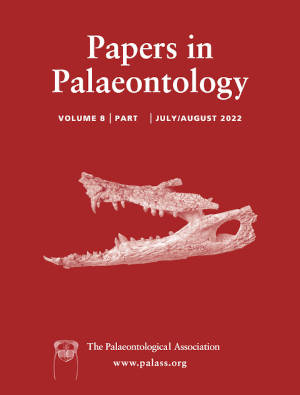Article: Early Jurassic coprolites: insights into palaeobotany and the feeding behaviour of dinosaurs
Publication: Papers in Palaeontology
Volume:
8
Part:
2
Publication Date:
2022
Article number:
e1425
Author(s):
Maria Barbacka, Artur Górecki, Grzegorz Pacyna, Grzegorz Pieńkowski, Marc Philippe, Károly Bóka, Jadwiga Ziaja, Agata Jarzynka, Martin Qvarnström, and Grzegorz Niedźwiedzki
DOI:
10.1002/spp2.1425
Abstract
Abstract Analyses of coprolites provide important data on animal feeding and food quality, including information on the taxonomy of the biotope. Knowledge of the diet of extinct animals has implications for our understanding of the evolution of various physiological strategies and feeding adaptations. Here we provide the first description of plant remains preserved in coprolites from early Hettangian deposits at Sołtyków (Holy Cross Mountains, Poland). The coprolites probably originated from herbivorous sauropodomorphs, ornithischians and large carnivorous theropods, from which tracks are known from the site. Herbivorous coprolite producers fed on the flora growing on a fluvial plain, and the cuticles that remain in the coprolites originated from crowns of gymnospermous trees or shrubs. Coprolites assigned to large predators contained more diverse plant remains, although they also belonged to the gymnosperms. These were probably ingested together with the stomachs and intestines of prey animals and/or accidentally while drinking or feeding. The plant cuticles originated from seed ferns (including the newly proposed Komlopteris distinctiva Barbacka sp. nov.), cycadophytes, ginkgophytes and conifers. A fragment of a needle leaf, Aciphyllum triangulatum Barbacka \& Górecki gen. et sp. nov., is very similar to the leaves of Pinus, and is the oldest example of such a leaf type in the fossil record. Most ingested plants came from beyond the immediate surroundings of today’s outcrop. Palynological analysis of the coprolites yielded 31 taxa of sporomorphs from the herbivore coprolites and 14 sporomorph taxa from the coprolites of predators. Cheirolepidiaceous pollen grains of Classopollis torosus dominated the sporomorph assemblage.
